How to Set Up Your First Fish Tank: A Complete Beginner’s Guide
Introduction: Starting Your Freshwater Aquarium Journey
Setting up your first freshwater fish tank can be an exciting yet daunting experience, especially if you’re new to the hobby. But don’t worry! This step-by-step guide will walk you through everything you need to know to get your first fish tank set up. From selecting the right tank to creating a thriving aquatic environment for your fish.
By the end of this article, you will have all the knowledge required to set up a beautiful and healthy aquarium. Plus, we’ll share tips and advice to save you time and help you avoid common beginner mistakes. Let’s dive in!
1. Choose the Right Tank Size and Location
Before you even begin to think about the fish, it’s essential to decide on the right size tank. The size of your tank will determine the type of fish you can keep and how much space you’ll need for plants, decorations, and equipment. Here’s how to choose:
- Tank Size: Beginners often opt for tanks in the 20-40 gallon range. These tanks have enough space for a variety of fish and are still manageable for a beginner. If the available space is limited, someone can choose a smaller tank, in the 5-10 gallon range. However, a larger tank (e.g., 20-40 gallons) offers more stability in water parameters and additionally more fish and plant options to choose from, which can be helpful for newcomers to the hobby.
- Location: Place your tank in a stable, quiet location, away from direct sunlight and heating sources. Avoid high-traffic areas where the tank could be bumped. An aquarium can be heavy once filled with water. It is crucial to ensure it’s on a sturdy surface to avoid any undesired accidents.
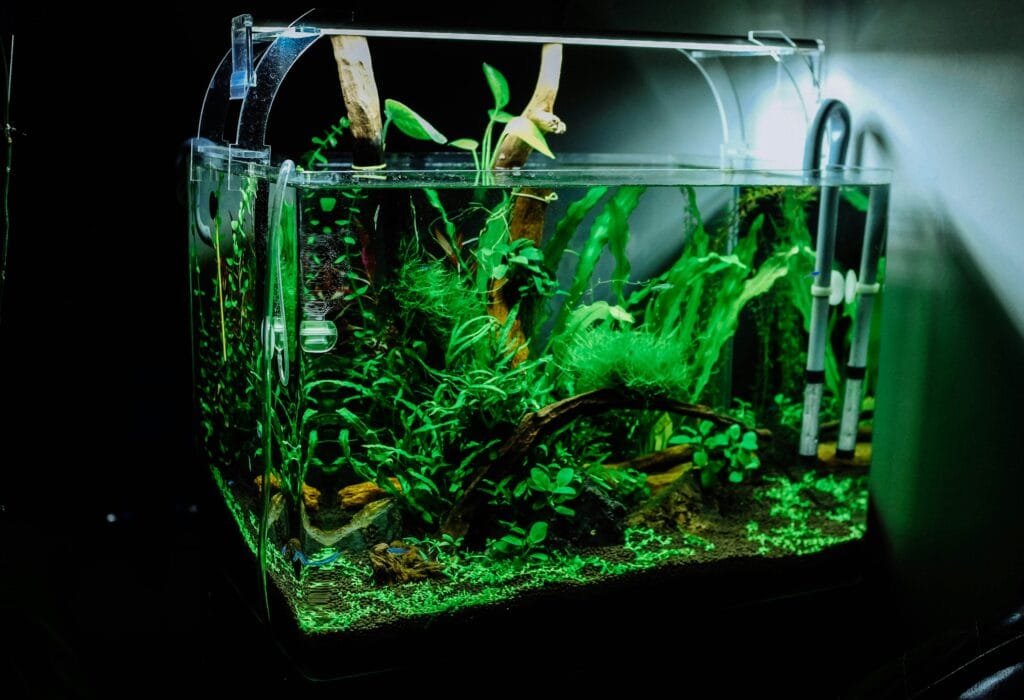
2. Select Your Equipment: Essential Tools for Your Aquarium
Now it’s time to gather the equipment you’ll need for your tank. Here’s a list of the essentials for your first freshwater aquarium setup:
- Aquarium Tank: Choose a glass or acrylic tank of a size that suits your space and the needs of the fish/shrimp you are planning to keep.
- Filter: A good filter is vital for maintaining water quality. You’ll need a filter that is appropriately sized for your tank. Look for filters labeled for tanks of your tank’s size or larger.
- Heater (for tropical fish): Most freshwater fish thrive in temperatures between 72°F and 80°F (22°C – 27°C). A reliable heater will help you maintain a consistent temperature and keep your fish happy.
- Lighting: Proper lighting is crucial for plant growth and to help fish feel comfortable. LED lighting is energy-efficient and provides great illumination for aquariums.
- Substrate: The substrate is the material at the bottom of your tank, typically gravel or sand. The substrate provides a surface for plants and bacteria to thrive.
- Water Conditioner: Tap water often contains chlorine and other chemicals harmful to fish. Use a water conditioner to neutralize these before adding water to your tank.
- Thermometer: To monitor water temperature and ensure it stays within the correct range.
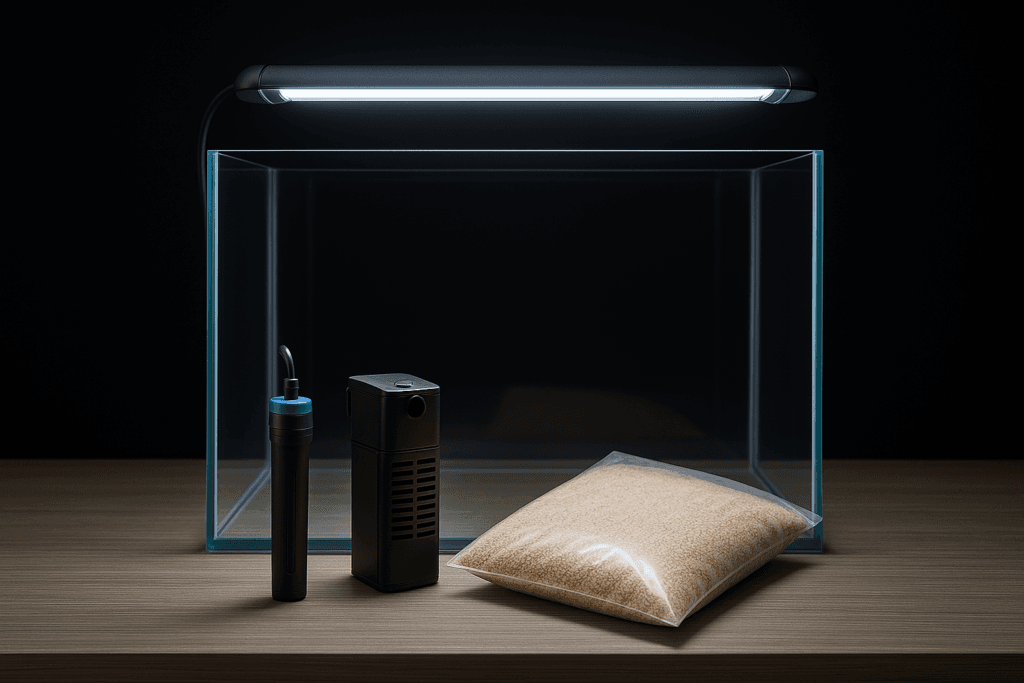
3. Set Up Your Tank: Installation Step-by-Step
Once you have all your equipment, it’s time to set up the tank. Here’s how to do it:
- Clean the Tank and Equipment: Before setting up, rinse the tank and equipment with water only (no soap). If you decide to clean any of them with soap, use a dish soap and rinse it very well. This ensures that no harmful chemicals are introduced to your aquarium.
- Place the Substrate: Add a layer of substrate (gravel or sand) at the bottom of the tank. You can also use a plant substrate if you plan to grow aquatic plants. Aim for about 2-3 inches of substrate.
- Install the Filter and Heater: Position the filter and heater inside the tank. Place the filter near the water’s surface to help with water circulation. The heater should be submerged but not placed directly under the filter.
- Fill the Tank with Water: Slowly fill the tank with dechlorinated water, leaving about 1 inch of space at the top. You can use a container or a bowl to pour the water gently, which helps prevent substrate disruption. If you fill it in with a hose, add the dechlorinator in the tank and use a pasta colander to reduce the substrate disruption.
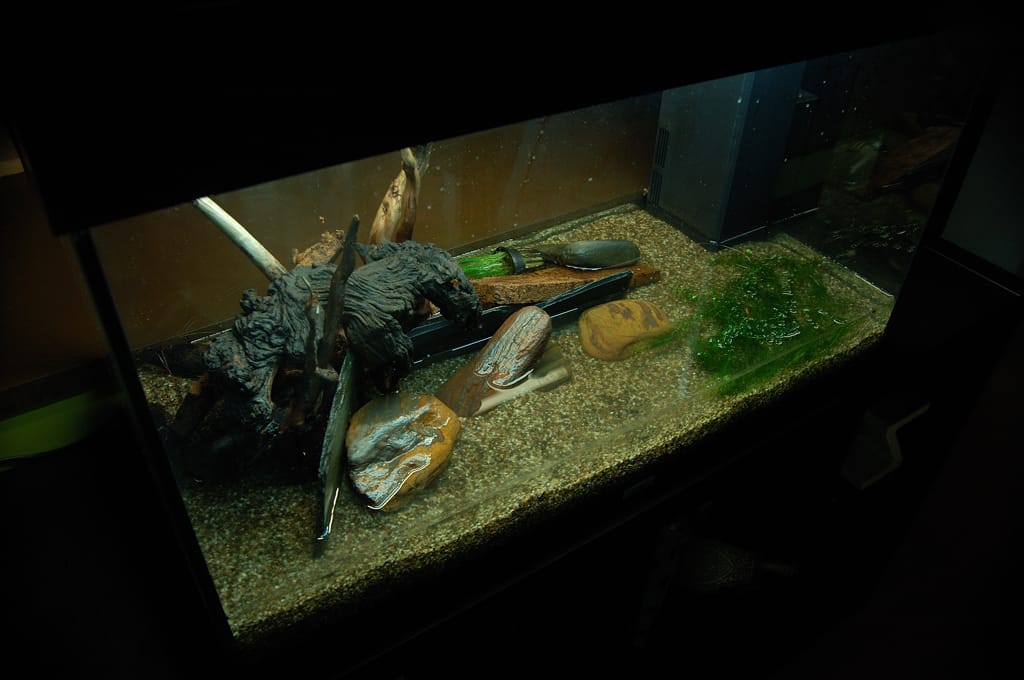
4. Cycle Your Tank: Prepare Your Aquarium for Fish
Before introducing any fish, it’s essential to cycle your tank. This process helps establish beneficial bacteria that will break down harmful ammonia and nitrites in the water, making it safe for your fish.
Fishless Cycling
This method involves adding an ammonia source to the tank (like fish food or pure ammonia) to kickstart the nitrogen cycle without fish. Beneficial bacteria gradually build up to process the waste. This process can take anywhere from 3 to 6 weeks, depending on conditions like temperature and the amount of ammonia added.
Fish-in Cycling
If you prefer to add fish sooner, you can do a “fish-in” cycle. However, this method is riskier for the fish, as they will be exposed to toxic levels of ammonia and nitrites until the bacteria colonies are fully established. If you choose this method, go slow—add only a few hardy fish, feed lightly, and monitor water parameters closely.
Cycling with Store-Bought Bacteria
Many aquarium beginners (and even seasoned hobbyists) now opt to speed up the cycling process using store-bought beneficial bacteria starters. These products contain live nitrifying bacteria that jumpstart the nitrogen cycle by seeding your tank instantly. Some of the most popular brands include Seachem Stability, Tetra SafeStart, and API Quick Start.
Here’s how to use them:
- Add the recommended dose to your tank according to the instructions on the bottle.
- Ideally, dose the bacteria product daily for the first week.
- Some products allow you to add a small number of fish right away—just be sure to monitor your water parameters closely and avoid overstocking.
Pro Tip: Even when using bottled bacteria, it’s still important to test your water regularly to ensure ammonia and nitrite levels stay in check during the first few weeks.
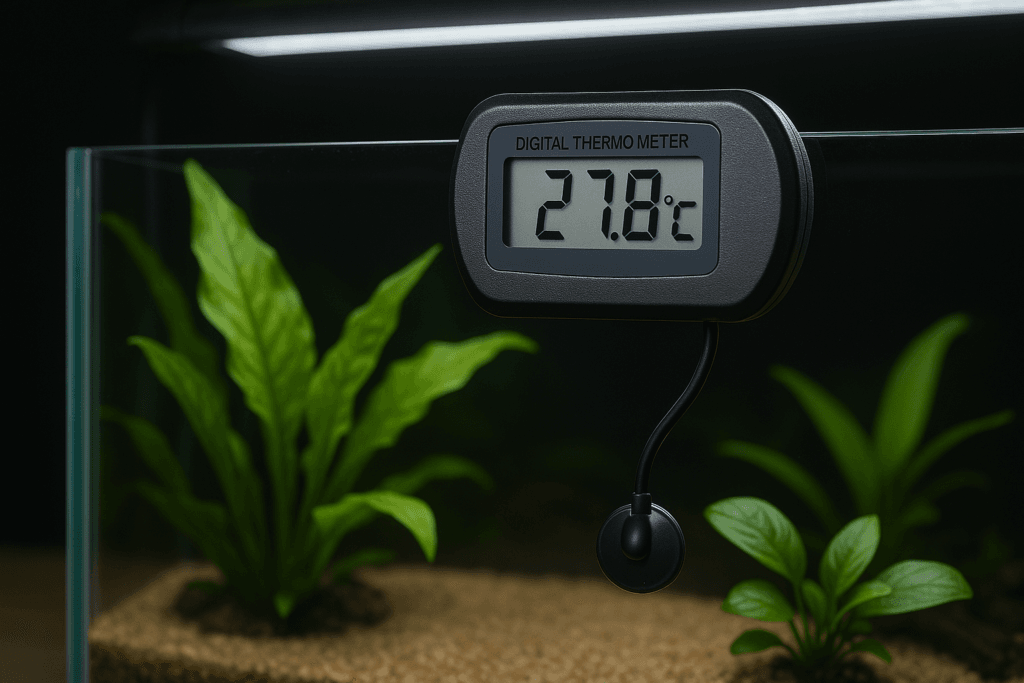
5. Choose Your First Fish: Beginner-Friendly Fish Species
When your tank is cycled and ready for fish, choose species that are hardy and easy to care for. Here are a few beginner-friendly fish:
- Betta Fish: These colorful fish are beautiful and low-maintenance.
- Neon Tetras: Small, peaceful fish with bright blue and red coloring.
- Guppies: Known for their vibrant colors and active behavior.
- Zebra Danios: Hardy and active, making them great for beginner aquariums.
- Corydoras Catfish: These bottom-dwellers help keep the substrate clean.
Start with a few fish to avoid overcrowding, and always research the compatibility of species before adding them together. If you’re unsure which species are compatible or how many your tank can hold, this fish selection guide will walk you through everything from temperament to stocking density.
If you’re planning to include shrimp in your tank, check out our complete guide to caring for freshwater shrimp to get started right.
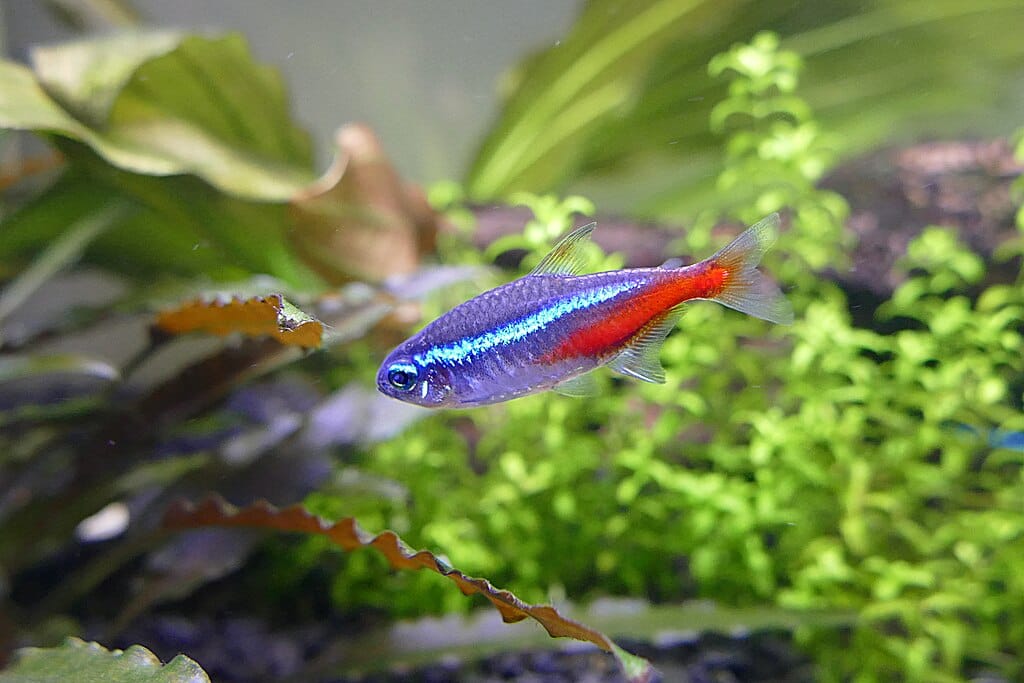
6. Maintain Your Aquarium: Regular Care and Maintenance Tips
Once your tank is set up, the key to keeping it healthy is regular maintenance. Here’s a quick checklist to keep your tank in top shape:
- Weekly Water Changes: Change about 10-20% of the water weekly to keep water quality high.
- Monitor Water Parameters: Use a water testing kit to monitor pH, ammonia, nitrites, and nitrates regularly.
- Clean the Filter:Rinse the filter media about once a month using water from the tank (never tap water, as it can kill beneficial bacteria). Avoid cleaning all the media at once — these surfaces host essential bacteria that keep your aquarium’s ecosystem balanced.
- Trim Plants: If you have live plants, trim dead leaves and excess growth to prevent overgrowth.
- Check the Equipment: Make sure the heater and filter are functioning properly and that the water temperature is stable.
Conclusion: Enjoying Your Freshwater Aquarium
Setting up your first freshwater fish tank can be a rewarding experience that offers endless hours of enjoyment. By following this guide, you’ll have the confidence to create a thriving aquatic environment for your fish. Remember, patience is key—take time to properly cycle your tank and care for your new aquatic friends.
As you become more experienced, you can experiment with different plants, decorations, and fish species to customize your tank. Happy fishkeeping!




